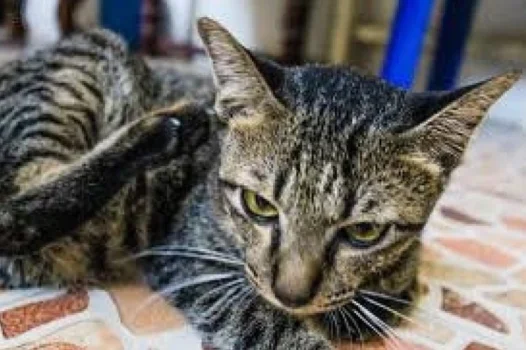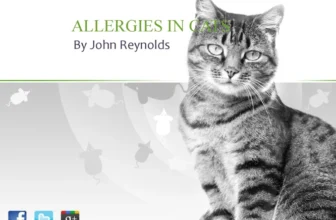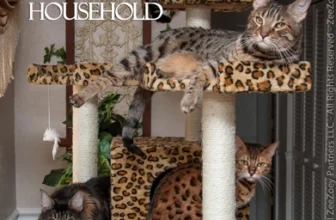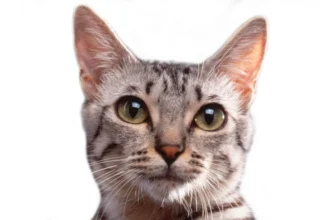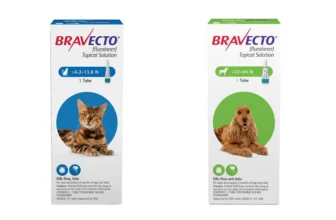It’s no secret that caring for our furry friends can be a highly rewarding experience, but it’s also no secret that it can sometimes be a complex and puzzling endeavor. One aspect of pet care that is often overlooked is dental health. As a California Spangled cat owner, you might be wondering how to ensure your cat’s teeth stay healthy and strong. This comprehensive guide will take you through the anatomy of a cat’s teeth, the common dental diseases that affect California Spangled cats, the signs and symptoms to watch out for, as well as the best ways to prevent and treat dental diseases at home and at the vet’s clinic. So, let’s get started on understanding dental diseases in California Spangled cats!
Anatomy of a Cat’s Teeth
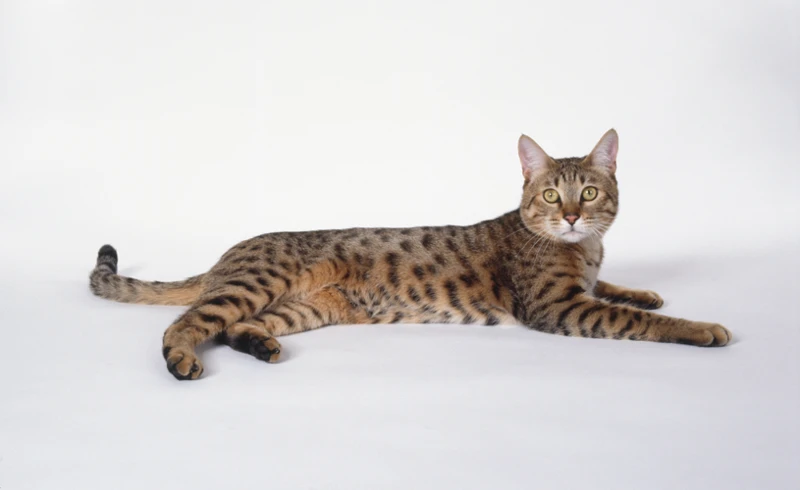
Have you ever wondered how a California Spangled cat’s teeth are structured and what functions they serve? Understanding the anatomy of their teeth is crucial for maintaining their dental health. A cat’s teeth differ from human teeth, and each tooth serves a unique purpose. In this section, we will discuss the anatomy of a cat’s teeth, the types of teeth they have, and their functions. Knowing these basics will help you better care for your cat’s dental wellness and prevent dental diseases that can be detrimental to their overall health. Don’t forget to schedule regular dental checkups with your vet, as well as brushing your cat’s teeth and using the best dental products to ensure their teeth stay healthy.
Structure of a Cat’s Teeth
Structure of a Cat’s Teeth
Understanding the structure of California Spangled Cats’ teeth is crucial for identifying dental diseases. Cats’ teeth are unique, with specially adapted features for their carnivorous diet. Let’s take a look at the structure of a cat’s teeth in the table below:
| Type of Teeth | Description |
|---|---|
| Incisors | Located at the front of the cat’s mouth, these teeth are used for biting and grooming. |
| Canine Teeth | Long and pointed, these teeth are used for ripping flesh and grasping prey. |
| Premolars | Strong and sharp-sided teeth used for cutting flesh and crushing bones. |
| Molars | Bigger and more powerful teeth than premolars, used for grinding and crushing food. |
As you can see, each type of tooth has a unique function. California Spangled Cats’ teeth are ideal for hunting prey, but they can also develop dental diseases. Paying attention to their dental hygiene is crucial to maintain their overall health. Regular dental checkups by a veterinarian, such as those at California Spangled Dental Checkups, along with daily at-home dental care, can help your feline friend maintain their dental wellness. Additionally, choosing the best dental products, as seen at Best Dental Products for Spangled Cats, will ensure your cat’s good oral health.
Cat’s Teeth Types and Functions
The California Spangled cat’s teeth, just like any other cat’s teeth, are crucial for their survival in the wild and their overall well-being. These small yet powerful teeth play a significant role in the cat’s ability to hunt, eat, and defend themselves.
The types of teeth in a cat’s mouth include:
- Incisors: These teeth are located at the front of a cat’s mouth, and they are used for grooming fur and scraping meat off of bones.
- Canines: These are the long, pointed teeth located on either side of a cat’s front teeth. They are primarily used for biting into and holding prey while the cat kills it.
- Premolars: These teeth are located between the cat’s canine teeth and molars. They have sharp edges that are ideal for shearing flesh from bone.
- Molars: These are the largest teeth in a cat’s mouth, located at the back of the mouth. They are used to crush and grind food, which aids in digestion and nutrient absorption.
Understanding the function of each type of tooth can help you better understand how to care for your California Spangled cat’s dental hygiene.
Regular brushing of your cat’s teeth can help prevent dental diseases and maintain their overall dental wellness. You can find tips on how to properly brush your cat’s teeth on our website under CA Spangled Teeth Brushing Tips.
However, if your California Spangled cat is already suffering from dental diseases, professional dental cleaning might be necessary. You can also provide additional dental care for your cat at home using remedies such as baking soda and coconut oil, which can help to maintain your California Spangled cats’ dental wellness.
Common Dental Diseases in California Spangled Cats
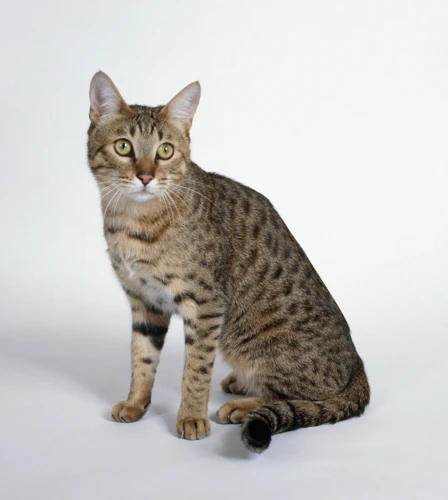
As much as we love our California Spangled cats, their dental health is often overlooked. Dental diseases are not uncommon, and they can cause discomfort, pain, and even lead to serious health problems. It’s crucial to be aware of the potential dental diseases that your cat may develop. In this section, we cover some of the most common dental diseases that California Spangled cats can experience and what you should look out for. We also provide some tips on how to prevent these dental problems to ensure a healthy and happy life for your feline friend.
Gingivitis and Periodontitis
Gingivitis and periodontitis are two of the most common dental diseases in California Spangled cats. Gingivitis is inflammation of the gums, usually caused by plaque and tartar buildup around the base of the teeth. If left untreated, gingivitis can progress to periodontitis, which is the inflammation of the tissue that surrounds and supports the teeth and can lead to tooth loss.
Some symptoms of gingivitis and periodontitis in California Spangled cats include:
- Bad breath
- Red, swollen, or bleeding gums
- Pawing at the mouth or face
- Difficulty chewing or eating
- Loose or missing teeth
Prevention is the key to avoiding gingivitis and periodontitis in California Spangled cats. Regular dental cleanings are the best way to remove plaque and tartar buildup and examine the cat’s mouth for signs of disease. Dental cleanings are usually performed under anesthesia to minimize pain and discomfort for the cat.
It’s also important to maintain good oral hygiene at home. Brushing your cat’s teeth with a soft-bristled toothbrush and cat-safe toothpaste can help prevent plaque buildup and remove bacteria. Feeding your cat a high-quality diet and providing chew toys can also help maintain oral health and prevent dental diseases.
If your California Spangled cat is showing signs of gingivitis or periodontitis, it’s important to schedule a visit with your veterinarian as soon as possible. They can advise you on the best course of treatment, which may include antibiotics, pain management, or dental surgery if necessary.
Staying on top of your California Spangled cat’s oral hygiene and scheduling regular dental cleanings with your veterinarian can help prevent gingivitis and periodontitis. Pay attention to your cat’s behavior and symptoms and don’t hesitate to seek veterinary care if needed.
Stomatitis
Stomatitis is a painful dental disease that affects California Spangled cats. This disease causes severe inflammation of the gums and the tissues surrounding the teeth, leading to difficulty eating and hypersalivation. Stomatitis usually appears as red and inflamed gums and can sometimes lead to ulcers and abscesses.
The exact cause of the disease is unknown, but it may be caused by an autoimmune response, viruses, or bacteria. Experts have suggested that certain breeds of cats, including California Spangled cats, may be more susceptible to stomatitis due to a genetic predisposition.
Symptoms of Stomatitis
California Spangles with stomatitis may exhibit the following symptoms:
| Symptoms of Stomatitis |
|---|
| Difficulty eating or swallowing |
| Excessive drooling and hypersalivation |
| Inflamed and red gums |
| Bad breath |
| Bleeding gums or the appearance of blood in saliva |
| Abscesses on the gums or in the mouth |
If your cat exhibits any of the above symptoms, you should take them to the vet for a diagnosis and treatment.
Treatment of Stomatitis
Unfortunately, there is no definitive cure for this disease. Treatment is focused on controlling pain and inflammation and preventing secondary infections.
Treatment options may include the following:
| Treatment Options | Details |
|---|---|
| Anti-inflammatory drugs | These are used to control inflammation and reduce pain. Steroids are often the first line of defense in treating stomatitis. However, they should be used with caution and under the guidance of a vet, as long-term use can cause a slew of side effects. |
| Antibiotics | If a bacterial infection is present, antibiotics may be used to control it. These should only be prescribed by a veterinarian. |
| Immune-modulating drugs | These drugs are used to change the immune system’s response and address the autoimmune component of stomatitis. |
| Surgical treatments | Surgical options include tooth extraction, root canal therapy, or removal of inflamed oral tissues. These are usually reserved for severe cases of stomatitis when other treatments are no longer effective. |
Ultimately, the best approach for treating stomatitis in California Spangled cats is a multimodal one. A combination of reducing inflammation, managing pain, and supporting your cat’s immune system could go a long way in helping your cat manage symptoms and reduce the impact of the disease on their overall quality of life.
Tooth Resorption
Tooth resorption in California Spangled cats is a common but painful condition that affects their teeth. Also known as feline odontoclastic resorptive lesions (FORLs), tooth resorption occurs when the cells in a cat’s body break down and absorb the structure of the tooth, leading to its ultimate destruction. Here are some important facts to consider about tooth resorption in California Spangled cats:
- Causes: While the exact cause of tooth resorption in cats is still unknown, some theories suggest that it may be caused by inflammation, trauma, or viral infections. Genetics may also play a role in some cases.
- Symptoms: The symptoms of tooth resorption can be difficult to detect early on, but some signs to look out for include drooling, difficulty eating, bad breath, and bleeding from the mouth. As the condition progresses, cats may become irritable and avoid having their mouths touched.
- Treatment: Unfortunately, there is no cure for tooth resorption. The affected tooth will need to be extracted to alleviate the pain and prevent the spread of the condition to other teeth. In some cases, medication may be prescribed to manage pain and inflammation.
- Prevention: There is currently no known way to prevent tooth resorption, but maintaining excellent dental hygiene with regular brushing and vet check-ups can help detect the condition early on and prevent it from progressing to a later stage.
If you suspect that your California Spangled cat may be suffering from tooth resorption, it’s important to seek veterinary attention as soon as possible. Early diagnosis and treatment can help alleviate pain and prevent the condition from causing further damage to your cat’s dental health.
Signs and Symptoms of Dental Diseases in California Spangled Cats
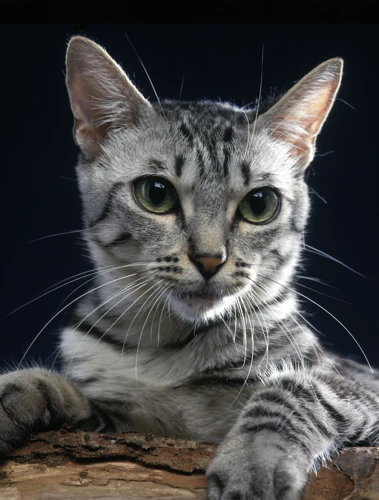
As a pet owner, being aware of the signs and symptoms of dental diseases in your California Spangled cat is crucial to maintaining their overall health and well-being. Cats are known for their stoic nature, which means they may hide their discomfort or pain until a dental disease has advanced. It is important to be vigilant and watch out for the following signs:
1. Bad breath (halitosis): One of the most common and noticeable signs of dental disease is bad breath. If your cat’s breath has a foul odor, it is a sign of dental disease.
2. Yellow or brown discoloration on the teeth: If you notice yellow or brown stains on your cat’s teeth, it is a sign of plaque build-up. Over time, this plaque can harden into tartar, leading to gum inflammation and eventual tooth loss.
3. Swollen or bleeding gums: Inflamed and bleeding gums are signs of gingivitis, which is an early form of periodontal disease. If left untreated, it can progress to advanced periodontitis, which can cause severe dental problems and health issues.
4. Difficulty eating: If your cat is having difficulty eating, it may indicate that they have dental problems. Cats with dental diseases experience pain when they chew, which can lead to decreased appetite and weight loss.
5. Pawing at the mouth: If your cat is frequently pawing at their mouth, it can be a sign of dental pain or discomfort.
6. Excessive drooling: Cats with dental diseases often drool excessively or have a difficult time swallowing.
If you observe any of these symptoms in your California Spangled cat, it’s important to consult a veterinarian as soon as possible. Early diagnosis and treatment can prevent further complications and ensure your cat’s oral health and overall well-being.
Preventing Dental Diseases in California Spangled Cats
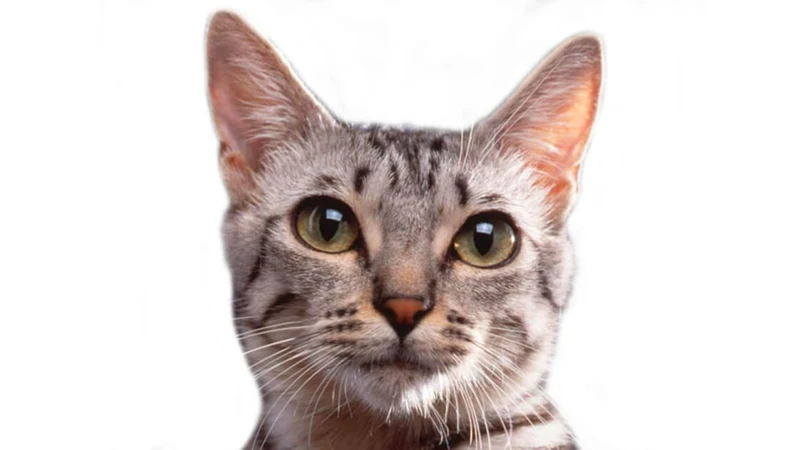
As a California Spangled cat owner, preventing dental diseases in your furry friend is of utmost importance. Neglecting their dental health can lead to serious health issues and even shorten their lifespan. Luckily, there are several preventative measures that can be taken to ensure your cat’s dental hygiene stays in top shape. From oral hygiene practices to providing a quality diet, there are many steps you can take to keep your cat’s teeth healthy and strong. In this section, we will outline the top preventative measures cat owners can take to protect their California Spangled cats from dental diseases.
Oral Hygiene
Maintaining good oral hygiene is crucial when it comes to preventing dental diseases in California Spangled cats. Here are some key practices to follow:
| Practice | Description |
|---|---|
| Regular Brushing | Brush your cat’s teeth regularly with a soft-bristled toothbrush and non-toxic toothpaste specifically designed for cats. Start slow with introducing this new routine, let your cat smell and taste the toothpaste before inserting the brush into their mouth. Gradually increase the frequency and duration of brushing. |
| Mouth Rinses | Alongside regular brushing, use a mouth rinse like Dental Fresh. It contains no alcohol or harmful ingredients and can help with bad breath, plaque, and tartar control. |
| Dental Wipes | For cats who are not fond of brushing, dental wipes could be a useful alternative. They are pre-moistened with cat-safe ingredients and are designed to clean teeth and freshen breath. |
| Water Additives | Another option for oral hygiene is to add dental water additives to your cat’s drinking water. These additives can help fight plaque and tartar buildup, freshen breath and improve the overall health of your pet’s mouth. However, make sure to use only cat-appropriate products. |
Keep in mind that proper and consistent oral hygiene practices can help prevent dental diseases, and early detection of any abnormality can also save your cat’s life. Pay attention to the signs and symptoms mentioned in the previous section, and don’t hesitate to consult with a veterinarian if you have any concerns.
Quality Diet
One way to prevent dental diseases in California Spangled Cats is by providing them with a high-quality diet. A good diet can help maintain the health of their teeth and gums. Here are some tips for ensuring that your cat’s diet is of high quality:
- Protein: Your cat’s diet should be protein-rich. Look for cat food that has meat or fish as the first ingredient and avoid those that contain fillers like corn or wheat.
- Moisture: Keeping your cat hydrated is also important for oral health. Look for wet cat food or add water to dry food to increase moisture intake.
- Carbohydrates: Cats do not require carbohydrates in their diet, but some cat food brands include them. Choose a brand that has low carbohydrate content.
- Vitamins and Minerals: Look for cat food that is supplemented with essential vitamins and minerals like calcium, phosphorus, and Vitamin D to maintain the health of teeth and bones.
It is important to consult with a veterinarian to ensure that your cat is on an appropriate diet, especially if they have any medical conditions. A balanced diet with the right nutrients can prevent dental diseases and improve overall health in your feline friend.
Chew Toys
Chew toys can be a great addition to your California Spangled cat’s dental care routine. Not only do they provide entertainment, but they can also improve your cat’s oral health by reducing plaque buildup and strengthening jaw muscles. However, it is important to choose the right type of chew toy to avoid any potential hazards or damage to your cat’s teeth and gums.
Types of Chew Toys
There are different types of chew toys available, and it is important to choose one that is safe and appropriate for your cat’s age, size, and dental health needs. Here are some types of chew toys and their benefits:
| Types of Chew Toys | Benefits |
|---|---|
| Rubber toys | Durable and can help clean teeth by massaging gums |
| Dental chews | Specifically designed to reduce plaque buildup and freshen breath |
| Natural bone or antler chews | Can satisfy your cat’s natural chewing instincts, but choose a soft, non-splintering option |
| Catnip-stuffed toys | Can provide entertainment and encourage chewing, but monitor your cat’s use to prevent excessive ingestion of the catnip |
Choosing the Right Chew Toy
When choosing a chew toy for your cat, make sure it is made of safe materials and is appropriate for your cat’s age and size. Avoid toys that are too hard, as they can cause damage to your cat’s teeth and gums. Soft and pliable toys are better for chewing, especially for cats with dental issues.
Monitor Your Cat’s Use
While chew toys can be beneficial for your cat’s dental health, it is important to monitor your cat’s use to ensure they are not ingesting any pieces that could cause choking or blockages in the digestive system. Make sure to regularly inspect the chew toy for signs of wear and replace it if necessary.
Incorporating chew toys into your California Spangled cat’s dental care routine can be a fun and effective way to promote good oral health. Just remember to choose the right toy and monitor your cat’s use to ensure their safety and well-being.
Dental Care for California Spangled Cats

When it comes to dental care for your California Spangled cat, it’s essential to ensure that their teeth and gums are healthy to prevent various dental diseases. While regular brushing and good oral hygiene habits can go a long way in maintaining dental health, professional dental cleaning and regular vet visits are equally crucial. In this section, we will discuss some essential aspects of dental care for California Spangled cats that every cat parent should know. So read on to ensure that your feline friend has healthy pearly whites!
Regular Vet Visits
Regular vet visits are crucial for detecting and preventing dental diseases in California Spangled cats. During these visits, the vet will conduct a thorough examination of your cat’s oral cavity to check for any signs of dental disease. They will also be able to identify any potential issues that may lead to dental problems in the future. Here are some of the benefits of taking your California Spangled cat to the vet regularly:
| Benefit | Description |
|---|---|
| Early Detection of Dental Diseases | Veterinarians are trained to identify early signs of dental diseases like gingivitis, periodontitis, and stomatitis, which can be hard to detect at home. |
| Prevention of Dental Diseases | Veterinarians can provide advice on what you can do at home to prevent dental diseases from occurring, such as oral hygiene routines and diet recommendations. |
| Treatment of Dental Diseases | If your California Spangled cat is diagnosed with a dental disease, the vet will be able to provide the appropriate treatment plan to manage or cure the condition. |
| Overall Health Check-up | During a regular vet visit, your cat’s overall health will be examined, including vital signs, weight, and any other potential health issues. This can help prevent larger health problems from developing due to dental diseases. |
Regular vet visits should be scheduled at least once a year for adult California Spangled cats. Kittens may require more frequent visits in their first year of life for vaccinations and health checks. If your cat is experiencing any symptoms such as bad breath, difficulty eating, or pawing at their mouth, do not hesitate to schedule a visit to the vet. Remember, prevention and early detection are key when it comes to maintaining your California Spangled cat’s dental health.
Professional Dental Cleaning
When it comes to maintaining the dental health of your California Spangled cat, professional dental cleaning is crucial. A professional dental cleaning must be conducted by a veterinarian, who can assess your cat’s overall dental health and determine the best course of action.
During a professional dental cleaning, the veterinarian will:
- Examine your cat’s teeth and gums for signs of disease or damage.
- Remove any plaque or tartar buildup on the teeth, both above and below the gumline. This may involve the use of specialized dental tools and equipment.
- Polish the teeth to smooth out any rough spots and help prevent future plaque buildup.
- Administer any necessary dental treatments, such as fluoride application or the placement of dental sealants.
- Assess your cat’s overall oral health and provide recommendations for at-home dental care.
It is important to note that professional dental cleaning may require general anesthesia, as it can be uncomfortable or even painful for your cat to have their teeth and gums examined and cleaned. Your veterinarian will discuss the risks and benefits of anesthesia with you before the procedure.
Benefits of professional dental cleaning:
- Reduction in the risk of dental disease and associated health problems, such as heart disease and kidney disease.
- Removal of plaque and tartar buildup that can cause bad breath and discomfort for your cat.
- Fresh breath and a healthier, happier cat overall.
To ensure optimum health and wellbeing of your California Spangled cat’s teeth and gums, it is important to schedule regular dental cleanings with your veterinarian and follow their recommendations for at-home dental care.
Home Remedies for Dental Care in California Spangled Cats
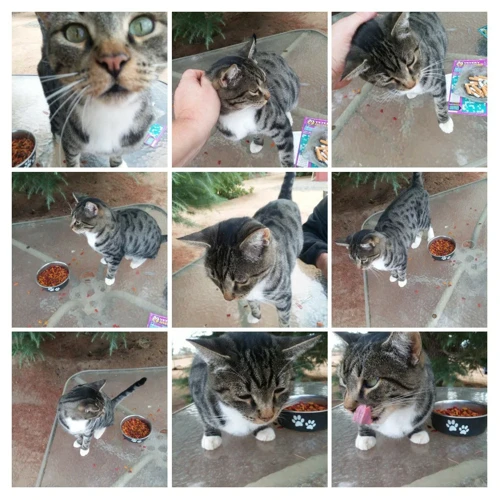
We all love taking care of our furry friends, and ensuring their dental health is just as important as any other aspect of their well-being. While taking your California Spangled cat to the vet regularly and ensuring they follow a proper oral hygiene routine is essential, there are also some home remedies you can incorporate into their routine to keep their teeth healthy and strong. In this section, we’ll explore some simple yet effective home remedies for dental care in California Spangled Cats that you can try out at home.
Baking Soda and Coconut Oil
If you’re looking for a natural way to take care of your California Spangled cat’s dental health, baking soda and coconut oil can be a great option. Baking soda has natural whitening and stain-removing properties that can help keep your cat’s teeth clean and healthy. Meanwhile, coconut oil has anti-inflammatory and antimicrobial properties that can promote oral health and reduce the risk of tooth decay and gum disease.
To use this home remedy, you can create a simple paste by mixing equal parts of baking soda and melted coconut oil. You can then use a soft-bristled toothbrush or a small piece of gauze to apply the paste to your cat’s teeth and gums. Be sure to massage the paste into their teeth and gums gently and rinse their mouth afterward with plain water.
Benefits of Baking Soda and Coconut Oil for Your Cat’s Teeth:
- Helps remove plaque and tartar buildup
- Reduces bad breath and oral bacteria
- Whitens teeth naturally
- Prevents tooth decay and gum disease
- Has anti-inflammatory and antimicrobial properties
- Easy and cost-effective solution
Things to Keep in Mind:
- Don’t use too much baking soda, as it can be abrasive and damage your cat’s tooth enamel.
- Coconut oil can solidify at room temperature, so you may need to warm it up before using it.
- Some cats may not like the taste or texture of the paste. Be sure to introduce the remedy slowly and monitor your cat’s reaction.
- This home remedy is not a substitute for professional dental care. If your cat has significant dental problems, it’s important to consult with your veterinarian.
Baking soda and coconut oil can be a safe and effective way to help prevent dental diseases in your California Spangled cat. Just be sure to use them in moderation and alongside other dental care practices such as regular vet visits and professional dental cleanings.
Catnip and Silver Vine
There are some natural remedies that cat owners can try at home to help maintain their California Spangled Cat’s dental health. Two of these remedies are catnip and silver vine. Both of these plants are known to have a positive effect on cat’s dental health.
Catnip is a herb that produces a chemical called nepetalactone. This chemical compound is known to have a calming effect on cats. Additionally, when cats chew on the leaves of the catnip plant, it can help to clean their teeth. The abrasive texture of the leaves can help to remove plaque and tartar build-up. It is also believed that catnip can help to freshen breath.
Silver vine is a plant that is similar to catnip. It also contains nepetalactone, but in a different form that is believed to be even more attractive to cats. Silver vine has been shown to have a positive effect on cat’s dental health by helping to remove plaque and tartar. It is also said to have a beneficial effect on bad breath and can help to soothe the gums.
To use catnip and silver vine as a dental remedy, pet owners can purchase dried leaves of these plants from their local pet store or online. Once purchased, the dried leaves can be rubbed on a cat’s teeth and gums. Alternatively, owners can add a small amount of the dried leaves to their cat’s food or water.
It is important to note that while these natural remedies can help to maintain a cat’s dental health, they are not a substitute for professional dental care. Regular visits to the vet for dental check-ups and cleanings are still necessary to ensure that any dental problems are caught and treated in a timely manner.
| Pros | Cons |
|---|---|
| Can help to clean teeth and remove plaque and tartar | Not a substitute for professional dental care |
| Believed to have a positive effect on bad breath and soothe the gums | No scientific studies on the efficacy for dental health |
| Easy to use at home | May not be effective on severe dental issues |
Frequently Asked Questions
After learning about dental diseases, prevention, and care for California Spangled cats, there may still be some questions on your mind. Here are some frequently asked questions and their answers to clear up any confusion:
1. How often should I take my California Spangled cat to the vet for dental check-ups?
It is recommended to take your cat for a dental check-up at least once a year. However, if you notice any signs of dental disease, such as bad breath, difficulty eating, or pawing at their mouth, it’s best to schedule an appointment as soon as possible.
2. Can dental diseases in California Spangled cats be contagious to other pets in the household?
No, dental diseases in cats are not contagious to other pets. However, they can develop similar dental issues if they are not properly cared for.
3. Is it safe to use home remedies for dental care on my California Spangled cat?
While some home remedies, such as baking soda and coconut oil, can be effective in maintaining oral hygiene, it’s important to consult with your veterinarian before trying any home remedies. Some ingredients may be harmful to your cat, and a professional dental cleaning may be necessary to fully address dental disease.
4. Can proper diet prevent dental diseases in California Spangled cats?
A proper diet can help prevent dental diseases by promoting healthy teeth and gums. Feeding your cat a high-quality diet, free of excessive carbohydrates and sugars, can help keep their teeth healthy for longer.
5. Should I use a toothbrush or finger brush to clean my cat’s teeth?
Either a toothbrush or finger brush can be used to clean your cat’s teeth. However, make sure to use a toothpaste that is specifically designed for cats, as human toothpaste can be harmful to them. Also, start the toothbrushing process slowly and gently, introducing it over time to allow your cat to get used to the sensation.
By addressing these frequently asked questions, you can ensure that your California Spangled cat receives the best possible dental care. Remember to always consult with your veterinarian for any concerns or questions regarding your cat’s dental health.
Conclusion
In conclusion, maintaining good dental health in California Spangled cats is crucial to their overall well-being. Dental diseases such as gingivitis, periodontitis, stomatitis, and tooth resorption can cause a lot of discomfort and pain to these felines. Therefore, it’s essential to be aware of the signs and symptoms of dental diseases and take preventive measures to avoid them altogether.
This article has discussed the importance of oral hygiene, a quality diet, and chew toys in preventing dental diseases. Additionally, regular vet visits and professional dental cleaning are vital for maintaining a cat’s dental health. Home remedies such as baking soda and coconut oil or catnip and silver vine can be helpful, but it’s important to consult a vet before trying them.
In summary, ensuring that your California Spangled cat has healthy teeth and gums should be a priority. Good dental care can prevent many dental diseases and can also play a crucial role in the overall well-being of your feline companion. By following the preventive measures and seeking medical attention when necessary, you can help your cat achieve optimal dental health and a happier life.
Frequently Asked Questions
1. What is the most common dental disease in California Spangled Cats?
The most common dental disease in California Spangled Cats is gingivitis and periodontitis.
2. How can I tell if my California Spangled Cat has dental disease?
Signs of dental disease in California Spangled Cats include bad breath, drooling, difficulty eating, pawing at the mouth, and inflammation of the gums.
3. Can dental disease in California Spangled Cats be prevented?
Yes, dental disease in California Spangled Cats can be prevented through regular oral hygiene, a quality diet, and the use of chew toys.
4. How often should I take my California Spangled Cat to the vet for dental check-ups?
Your California Spangled Cat should have a dental check-up at least once a year, and more frequent check-ups may be necessary if your cat has an existing dental condition or is prone to dental disease.
5. What is tooth resorption in California Spangled Cats?
Tooth resorption is a dental disease in California Spangled Cats where a portion of the tooth’s structure breaks down and is absorbed by the body.
6. Can I clean my California Spangled Cat’s teeth at home?
Yes, you can clean your California Spangled Cat’s teeth at home using a small, soft-bristled toothbrush and pet-safe toothpaste.
7. Are there any home remedies for dental care in California Spangled Cats?
Yes, some home remedies for dental care in California Spangled Cats include mixing baking soda and coconut oil for a toothpaste, and providing catnip or silver vine toys for your cat to chew on.
8. What are some good chew toys for dental health in California Spangled Cats?
Good chew toys for dental health in California Spangled Cats include dental-specific chew toys, raw bones, and toys made from natural fibers like wool or jute.
9. Can a diet affect my California Spangled Cat’s dental health?
Yes, a quality diet that is high in protein and free from harmful additives and preservatives can help maintain your California Spangled Cat’s dental health.
10. How often should my California Spangled Cat receive professional dental cleaning?
Your California Spangled Cat should receive professional dental cleaning at least once a year, and more frequent cleanings may be necessary if they have an existing dental condition or are prone to dental disease.

